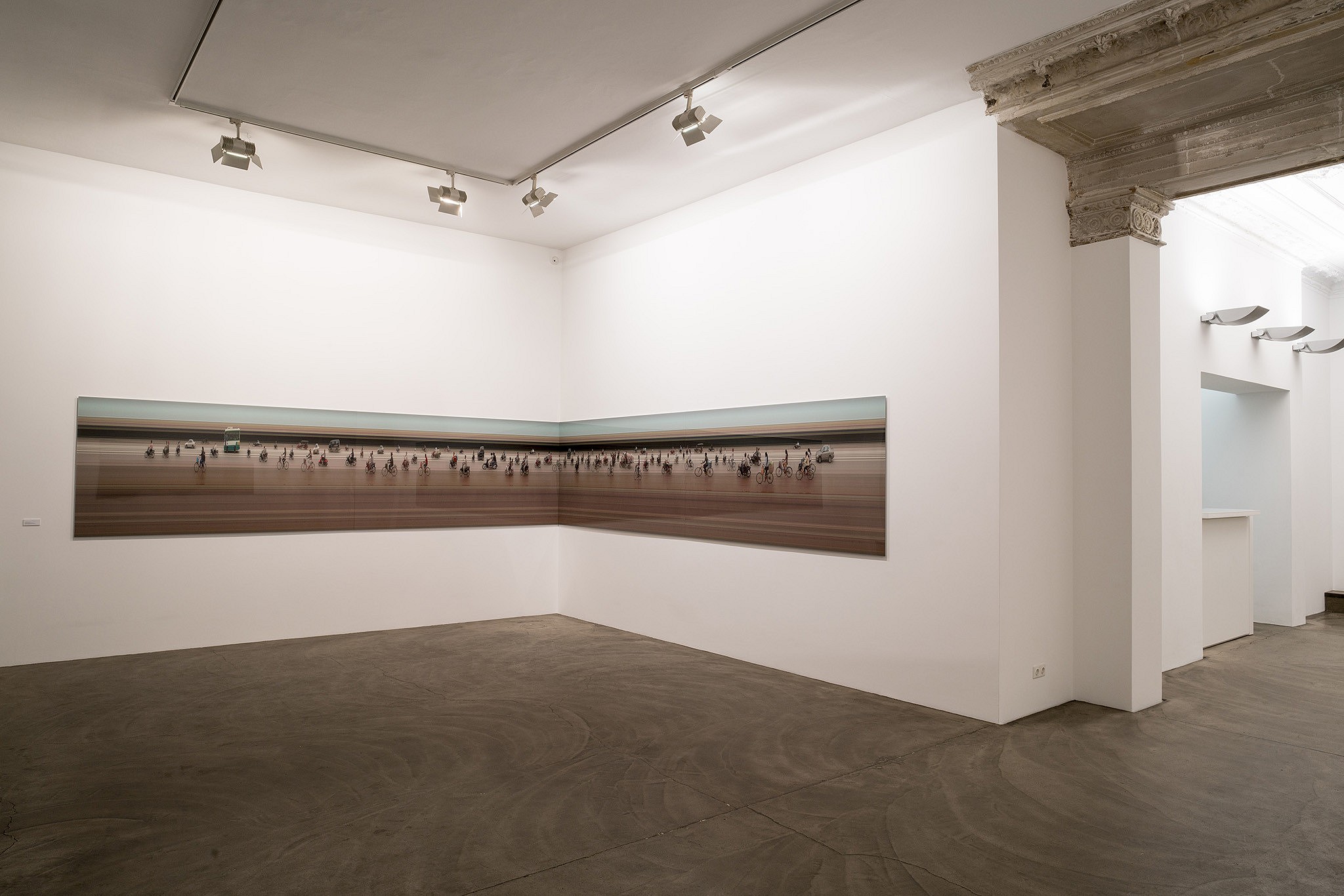
SIDESHOW SIEM REAP
Sep 9 – Nov 19, 2016
Galerie Deschler, Berlin DE
In order to understand the large-format photographs of American artist Jay Mark Johnson (*1955) it is crucial to grasp their underlying paradox: while the images are created purely photographically, without digital manipulation or staging of a scene, and therefore depict actual events, they still create a perfectly illusory pictorial world. Johnson employs a modified camera which over a set period of time keeps recording the same narrow vertical strip in front of the camera lens and combines the successive photographs into an uninterrupted image that flows evenly from left to right. The vertical axis thus retains its spatial dimension, but the horizontal axis is dedicated to a depiction of the passage of time: "x = time." Immobile elements appear as a homogenous background of horizontal lines, only elements (figures, vehicles, etc.) that move through the recording plane assume a life of their own.
Johnson's hybrid combination of spatial and temporal dimensions links back to art historical precursors, above all the chronophotographic studies of movement of the late 19th century (Eadweard Muybridge, Étienne Jules Marey, Albert Londe et al.), as well as Italian Futurism (alluded to in the title with its mention of anarchism and automobiles). But Johnson both visually and methodologically goes beyond a purely technical experimentation by consciously exploiting the permutations and shifts effected by his recording process to examine, on a level of content, the nature and limits of our modes of perception. While his earlier works depicted dancers as amorphous shapes whose complex movement patterns were recorded in a kind of "action painting," his newer photographs play with the illusions brought about by a visual approximation of his time-images to conventional spatial images, while purposefully retaining a remnant of their comical distortions. A remarkable effect of the recording process that combines the image from successive individual photographs is the fact that the figures in the image always move in the same direction. This is the result of the camera writing the image in one direction. The camera thus effectively imposes an order and homogeneity onto the depicted reality that was never there in the first place.
The images in the present exhibition "SIDESHOW SIEM REAP" were all taken on a tour of northern Cambodia in the fall of 2012. Johnson describes the specific motivation for this series as follows:
"In the fall of 2012, I traveled to a region of northern Cambodia where the local people had suffered severely during the Vietnam War. Since childhood I had pondered grim reports of America’s secret bombing campaigns that sent endless barrages of fiery explosions raining down from the skies. In the image shown above, the subjects riding by are the survivors--along with their descendants--of that earth-shattering terror. I produced this photograph during early morning hours when farm laborers were riding their bicycles and motor scooters to work in the rice paddies. Today, large areas of southeastern Asia remain unusable and there are still casualties caused by the accidental detonation of buried, unexploded bombs. In the meanwhile, the U.S. military and its political culture have directed their focus elsewhere."